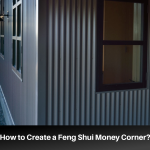Log siding is an exterior and interior cladding that mimics the look of traditional log construction. It’s made of wood, vinyl, concrete, and steel materials. Log cabin siding is installed horizontally, with the pieces stacking up to create the appearance of a traditional cabin.

Log house siding features the look of oval logs, with a flat interior face and a rounded exterior face. It’s a popular siding choice for cabins, lodges, and rural settings.
Pros and Cons of Log Siding
The distinct qualities of log siding come with advantages and drawbacks.
Pros
- Easy installation: Log siding has a simple installation process. Its light materials and simple design make it a DIY-friendly siding.
- Energy efficiency: Wood log siding provides insulation, keeping a home’s interior warm during winter and cool in the summer.
- Durability: Log siding consists of high-quality wood or other durable materials. It has an average lifespan of 15-40 years.
- Aesthetic appeal: Log siding provides a rustic, natural look that improves the curb appeal of any home or building. It also adds to the value of a property.
Cons
- Maintenance requirements: Wood log siding can be prone to rot, decay, and insect infestations. Sealing is necessary to protect it from elements. Other material options also need regular cleaning.
- Pricier than other alternatives: Log siding is a cost-effective alternative to traditional log construction. But it’s still more expensive than other types of siding.
How to Install Log Siding
Tools & Materials Required
- Tape measure
- House wrap
- Level
- Circular or miter saw
- Chalk line
- 3-inch galvanized nails/ screws
- Hammer
- Ladder/ scaffolding
- Starter strips
- Trim
- Paint/ stain
Installation Criteria
- Prepare the surface: The surface should be clean, dry, and debris-free. Make sure it’s level and smooth, as bumps can affect the appearance of the finished siding.
- Add a moisture barrier: Install house wrap to protect the house from moisture damage.
- Secure the starter strips: Starter strips provide a secure base for the first row of log siding. Use a chalk line to level the strips. Nail down the strips at ½-1 inch above the foundation and around windows and doors.
- Install the log siding: Place the first log at the base and use a level to straighten it. Secure the log siding using screws/ galvanized nails into the wall studs at a downward 45-degree angle. Work upwards, interlocking the siding pieces at the tongue. You may need to cut the siding as you reach power outlets and other obstacles. Also, you may have to cut the last row lengthwise to fit.
- Install the trim: Install trim pieces around windows, doors, and corners to provide a finished look. The trim also helps protect against moisture intrusion.
- Apply a finish: Finish with paint, stain, or other protective coatings.
Safety Measures & Best Practices
- Wear appropriate safety gear, such as safety glasses, gloves, and sturdy work boots.
- Follow the manufacturer’s instructions for the best results.
- Prime or pre-finish the siding surfaces when using wood log siding. You may also need to precondition the materials before installation.
- Avoid lacquers, varnishes, or other clear film-forming finishes on exposed wood. Such finishes crack and peel, which ruins the appearance of the siding.
Common Types of Log Siding Profiles
Log siding is available in various profiles, which determines the siding’s appearance.
Full Round Log Siding
Full round log siding is made from cylindrical logs with a uniform diameter along their length. The logs feature a curved exterior, giving them a rounded profile. The inside of the logs may be flat or have a tongue and groove profile, depending on the installation method used.
Half Log Siding
Half-log siding consists of logs milled or cut in half, resulting in a semi-circular profile. The flat side is installed against the wall, while the curved side faces outward. Half-round log siding is flatter and more regular in shape than full-round log siding.
Quarter Log Siding
Quarter log siding has a flatter surface than other types of log siding. The curved exterior faces overlap to create a series of horizontal arcs, which gives the siding a distinct look. It’s easy to install and affordable compared to other types.
D-Shaped Log Siding
The D-shaped log siding has a more refined and modern appearance than full round log siding. This profile features a flat surface on the inside of the log and a curved surface on the outside. It gives the logs a distinctive D-shape when viewed from one end. The logs’ flat interior surface makes installation easier. It also gives a more uniform appearance when finished.
Hand-Hewn Log Siding
Hand-hewn log siding features an irregular and textured profile with flat sections across each log. It creates a rustic, natural appearance for cabins, lodges, and rural settings.
Swedish Cope Log Siding
Swedish cope log siding features a half-moon cut on the underside of each log. The cope creates a tight, interlocking fit that provides good insulation and weather protection. The logs’ diameter ranges from 6-12 inches, with lengths up to 18 feet.
Alternatives to Wood Log Siding
Wood log siding consists of either pine or cedar log siding. Other log siding materials include vinyl, concrete, and steel.
Vinyl Log Siding
Exterior vinyl log siding features embossing to resemble the texture and grain of natural wood logs. Vinyl is resistant to moisture, rot, insects, and other damage that can affect natural wood. It requires very little maintenance besides cleaning with a hose or pressure washer.
Concrete Log Siding
Concrete log siding consists of sand, fiber cement, and other materials. Unlike wood, concrete log siding doesn’t need regular painting, staining, or sealing. It’s durable in extreme weather conditions, including rain, snow, wind, and sunlight. It’s also resistant to insects, rot, and other damage that can affect natural wood.
Steel Log Siding
Steel log siding consists of steel panels resembling natural wood logs. It’s a safe and reliable option since steel is fire-resistant and withstands harsh weather. Most metal siding feature foam backing to increase rigidity. Manufacturers also offer customization of colors and finishes.
Comparison of Log Siding With Other Siding Options
Comparing log siding with other types of siding helps you choose the best one for your home.
Vinyl Siding
While vinyl siding is cheaper, its production and disposal can have negative environmental impacts. Vinyl siding is made from PVC, which is a type of plastic. Vinyl material is less durable than natural log siding.
Fiber Cement Siding
Fiber cement siding is popular since it’s low maintenance and resistant to rot, insect damage, and fire. It comes in various styles, including shingles, clapboards, stone, stucco, and brick. Log siding is better for homeowners who want a rustic, natural house design.
Dutch Lap Siding
Dutch lap siding features an overlapping profile with wood, vinyl, fiber cement, or aluminum boards. Log siding requires more maintenance than Dutch lap siding. Natural log siding is susceptible to rot, insect damage, and warping over time.
Cedar Siding
Cedar siding is made from cedar wood. It’s available in various styles, including bevel, board and batten, and tongue and groove. Cedar is durable and moisture, insect, and decay-resistant. It requires less maintenance than wood log siding, which is susceptible to weather damage. But cedar is more expensive than vinyl and other wood siding.
Board and Batten Siding
Board and batten siding have similar material options as log siding. Professionals install this type of siding vertically or horizontally. The boards are installed individually, so replacing one faulty piece is easy. But, this type of siding takes longer to install than log siding.
Cost of Log Siding
Log siding costs between $2 and $13 per square foot. Vinyl log siding is the cheapest, at $3-$5 per square foot of material. Log siding made from premium wood like cedar and redwood is costly but offers better durability than pine. The cost varies depending on the siding profile, installation, and property size.
Factors Affecting the Overall Cost
- Local labor costs: Labor charges range between $1-$15 per square foot.
- Project size: Large projects cost more due to the increased labor, materials, and time required to complete the job.
- Surface preparation and repairs: Repairs to the home’s sheathing, house wrap, and removal of old siding add to the final cost.
- Finishing and sealing: Painting, trimming, and sealing increase costs, requiring more labor and materials. Vinyl and fiber cement log siding don’t need painting or sealing, which reduces the project cost.
- Quality and profile of log siding: Log siding with a thick profile costs more. D-shaped log siding is the deepest profile, while the quarter log is the most affordable.
Frequently Asked Questions (FAQ)FAQ
Can log siding be used for both interior and exterior applications?
Yes, log siding is used for interior paneling and exterior siding. Log siding can also be used as an accent wall in a room. It creates a rustic or cabin-like aesthetic of any building.
What is the typical lifespan of log siding?
Log siding has an average lifespan of 15-40 years. Proper installation and maintenance increase the longevity of the siding. The quality and type of wood influence the lifespan of natural log siding.
How do I choose the right log siding style for my home?
Consider the type of material you want to use for your log siding. Each has its own unique characteristics and price range. Synthetic log siding made from vinyl and fiber cement is available in various colors and textures.
Can I install log siding over my current siding?
Yes, the existing siding can act as the substrate if it’s in good condition. Inspect the walls for water leaks, rot, or warping before installation.



